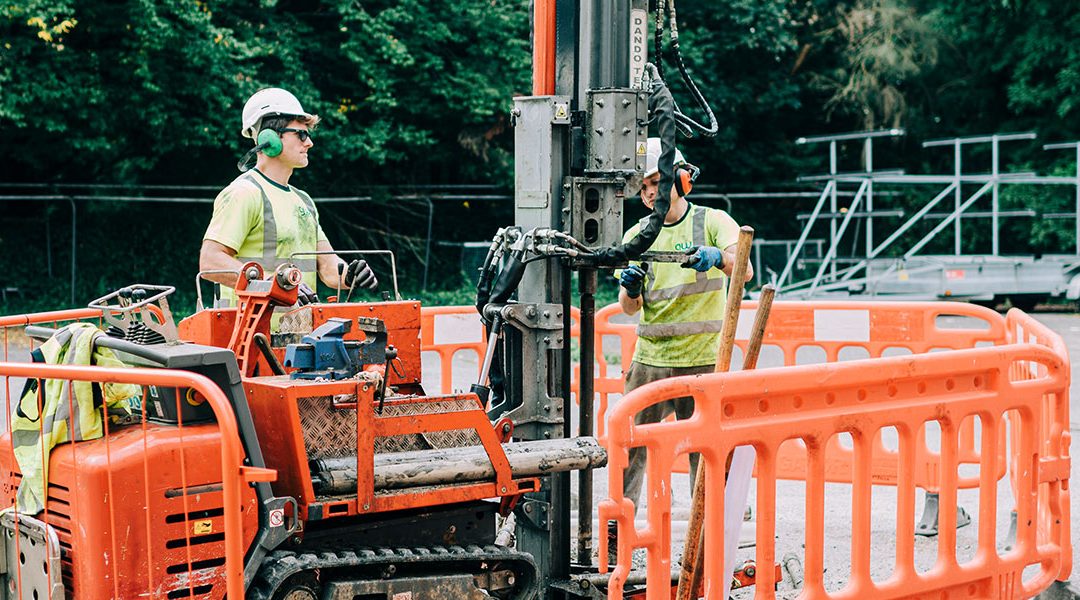The G&W Guide to… Windowless Sampling
Geotechnical
Windowless and Window Sampling
Windowless Sampling uses a rig to drive percussively, a 1m long fully enclosed metal sample tube into the ground. The tube has a type of one way valve at the bottom which allows a core sample to enter the metal tube and its plastic liner, but not fall back out (well, most of the time!). A window sample is similar, except the metal tube has a small window within it, through which you can see the soil sample in the tube.
So what type of sampling rig does what?
This is Rig Astley, our very own Windowless Sampling rig, also known as a Dynamic Sampling rig.
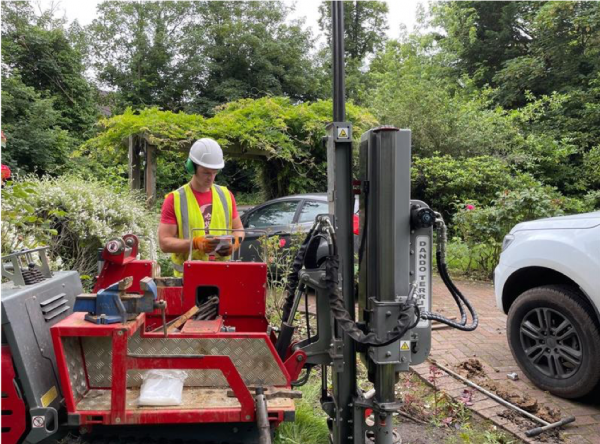
To see Rig Astley in action CLICK HERE
Basic rig specifications
There are minor variations in the basic rig spec, which depend on whether you have a Dando, Premier or Geotool rig, but broadly speaking they are:
- Width: 0.79m (without cages), 1.248m (with cages)
- Working height/headroom: 2.857m
- Length: 2.729m
- Working Area: 4m by 3m.
- Trackable height: 1.460m
- Can track down/up one or two step on board.
The key to this type of rig is that with cohesive deposits the quality of sample returned is a Class 3 or 4, allowing us to determine the board sequence of layers present, undertake Atterberg Limits and in some cases Moisture Content tests.
In addition to the Class 3 and 4 samples, in-situ testing comprising Standard Penetration tests or Dynamic Probes (Super Heavy) can be undertaken down the borehole. Shear Vane or Hand Pen tests could also be undertaken, but the compaction of the soil into the core liner/barrel must be taken into account.
Sampling capabilities
- Gravel/Rock: 2 – 4m bgl depending on density
- Clay: 8 – 12m bgl depending on strength.
We can do about 15 – 20m of drilling a day, depending on site and ground conditions. With mobilisation and one day’s work this equates to around £60 – 80 per meter.
The difficulty with this type of rig comes where there is wet sand, loose collapsing soils or groundwater. Casing to temporarily keep the borehole void open, can be used, but it slows down the drilling process. Given the size and weight of the rig, the ability to install and remove casing quickly is limited. In these ground conditions, recovery, depth achieved and in-situ testing results may be limited/affected.
So the rig is usually good for determining whether shallow footings are plausible on Geotechnical Category 2 buildings, such as houses. Care should be taken if using such a rig for a piled foundation as the required sample depth may not be achieved.
Although it is possible to bash the rods and sample tube down, to achieve greater depths, it is the weight of the rig, combined with the suction/friction on the rods/sampling tube when trying to recover them, which limits depth. And banging away endlessly on dense gravel soon shears bolts.
Please note that Eurocode 7 may say common drilling methods are not suitable for gravels. The trouble with gravel is that in order to be compliant, the code says that a sampling method should take a sample which is representative of the material present. This can only occur if the sample tube/diameter is 3x the largest diameter grain size. So, if any sandy gravels/gravels have fragments 20mm of larger, then the sample diameter will have to be 60mm or higher. With the largest sampler being 98 – 101mm (and these are only really used at 1-2m bgl) then sometimes the sample barrel may inadvertently not sample the coarser fragments.
Learn more about sampling and sample disturbance HERE
Other types of rigs
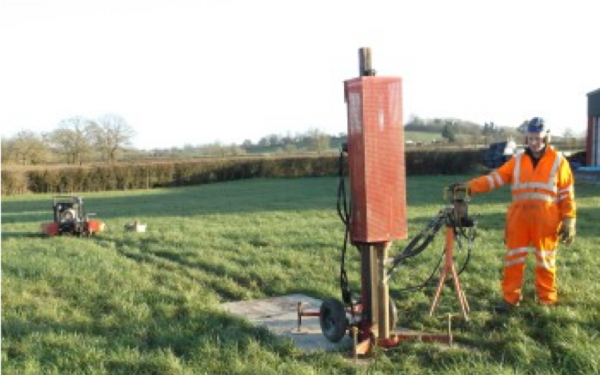
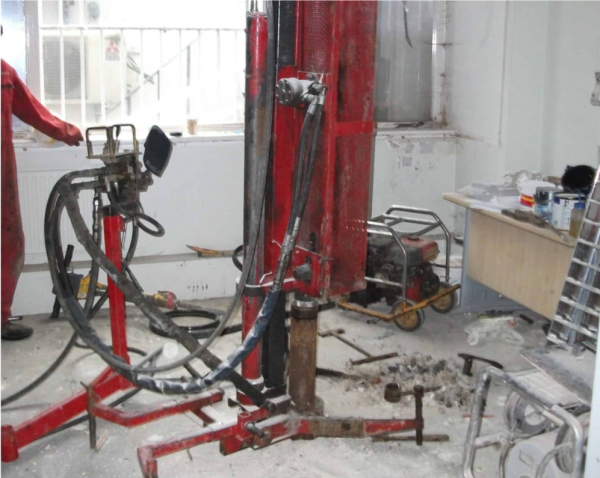
You can get demountable versions of Dynamic Sampling rigs (see above) for restricted access, which can fit through some internal doors. The issue with them, is that sample depth may be limited due to the power and weight available to drive the sample tube down and then recover the sample.
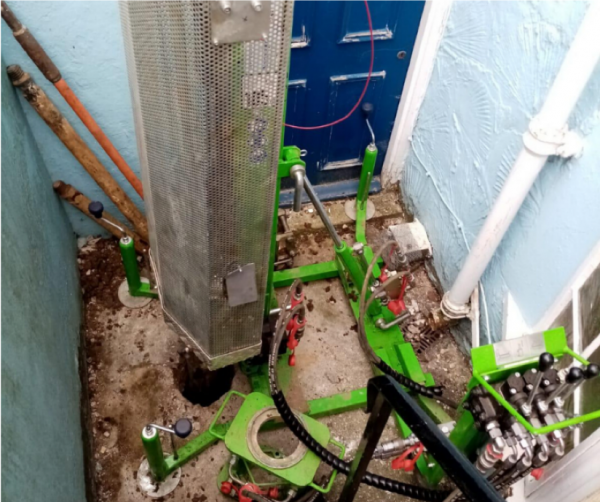 A hand-held version of the equipment is also available and is powered by a generator and jack hammer. Again, although accessible to most areas, (stairs can be troublesome) it has depth limitations, due to the power/weight needed to drive successive tubes into the ground and recover the sample.
A hand-held version of the equipment is also available and is powered by a generator and jack hammer. Again, although accessible to most areas, (stairs can be troublesome) it has depth limitations, due to the power/weight needed to drive successive tubes into the ground and recover the sample.
The benefits of our very own Rig Astley
Ground & Water’s in-house drilling, probing and dynamic sampling capability, enables us to be far more reactive and flexible, in terms of when and where we can undertake Site Investigations. This means you can look forward to receiving the all-important site investigation report and conclusions much quicker than a Geotechnical consultancy that has to rely on drilling contractors. A vital step on the road to project approval and getting you out of the ground and building.
Our next G&W Guide will look in detail at Cable Percussion rigs. See more on drilling rigs HERE
